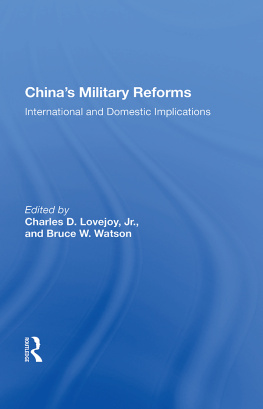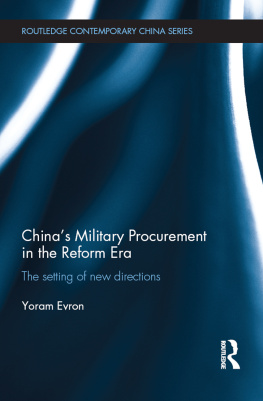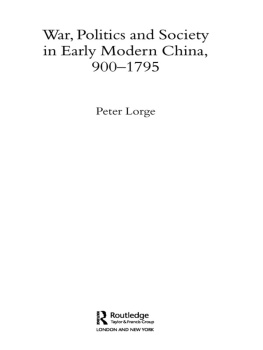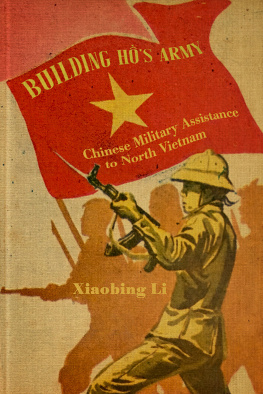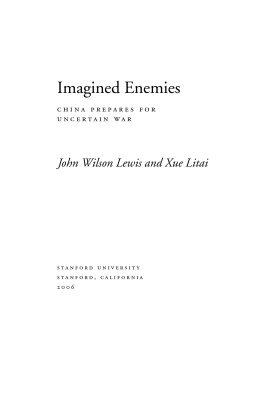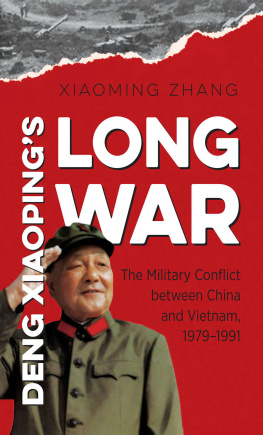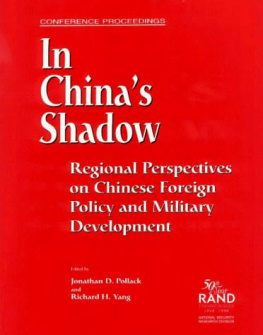ACTIVE DEFENSE
Princeton Studies in International History and Politics
G. John Ikenberry, Marc Trachtenberg, and William C. Wohlforth, Series Editors
For a full list of books in this series see https://press.princeton.edu/catalogs/series/title/princeton-studies-in-international-history-and-politics.html
Recent Titles
Active Defense: Chinas Military Strategy since 1949 by M. Taylor Fravel
After Victory: Institutions, Strategic Restraint, and the Rebuilding of Order after Major Wars, New Edition by G. John Ikenberry
Cult of the Irrelevant: The Waning Influence of Social Science on National Security by Michael C. Desch
Secret Wars: Covert Conflict in International Politics by Austin Carson
Who Fights for Reputation: The Psychology of Leaders in International Conflict by Keren Yarhi-Milo
Aftershocks: Great Powers and Domestic Reforms in the Twentieth Century by Seva Gunitsky
Why Wilson Matters: The Origin of American Liberal Internationalism and Its Crisis Today by Tony Smith
Powerplay: The Origins of the American Alliance System in Asia by Victor D. Cha
Economic Interdependence and War by Dale C. Copeland
Knowing the Adversary: Leaders, Intelligence, and Assessment of Intentions in International Relations by Keren Yarhi-Milo
Nuclear Strategy in the Modern Era: Regional Powers and International Conflict by Vipin Narang
The Cold War and After: History, Theory, and the Logic of International Politics by Marc Trachtenberg
Liberal Leviathan: The Origins, Crisis, and Transformation of the American World Order by G. John Ikenberry
Active Defense
Chinas Military Strategy since 1949
M. Taylor Fravel
PRINCETON UNIVERSITY PRESS
PRINCETON AND OXFORD
Copyright 2019 by Princeton University Press
Published by Princeton University Press
41 William Street, Princeton, New Jersey 08540
6 Oxford Street, Woodstock, Oxfordshire OX20 1TR
press.princeton.edu
All Rights Reserved
Library of Congress Control Number: 2018958697
ISBN 9780691152134
eISBN 9780691185590
Version 1.0
British Library Cataloging-in-Publication Data is available
Editorial: Eric Crahan, Bridget Flannery-McCoy, Alena Chekanov, and Pamela Weidman
Production Editorial: Mark Bellis
Jacket Design: Karl Spurzem
Jacket Credit: Chinese troops preparing for a military parade at the Zhurihe Training Base in North Chinas Inner Mongolia Autonomous Region, July 30, 2017. Image courtesy of Zha Chunming/Xinhua/Alamy
For my parents
CONTENTS
ix
xi
xv
ILLUSTRATIONS
Figure
Maps
Tables
ACKNOWLEDGMENTS
When I started my graduate studies, I wanted to write a dissertation on Chinas military strategy. In the end, however, I turned my attention to cooperation and conflict in Chinas many territorial disputes with its neighbors. Nevertheless, Im glad that I put it off. In the past decade, more sources on Chinese military affairs have become available than ever before. These sources make possible studying how the Peoples Republic of China has approached the formulation of military strategy over the past seventy years, from 1949 to today.
MITs Department of Political Science and especially the Security Studies Program have provided the ideal intellectual home for researching and writing this book. Since joining the department as a very junior scholar in 2004, Barry Posen and Richard Samuels have provided a unique and magical combination of mentorship and friendship. They have helped me grow not just as a scholar but also as a person. Steven Van Evera without fail has asked the most salient questions, pushing me and many others to pursue scholarship that matters. Owen Cote always finds time to answer all of my basic inquiries about how military hardware and technology does (or does not) actually work. When Vipin Narang and I met at Stanford twenty years ago, I could not have imagined that we would later become colleagues in the same field, much less the same department. He has become my comrade in arms in this business.
Several graduate students at MIT have helped me research various portions of this book. I thank Fiona Cunningham, Kacie Miura, Miranda Priebe, Joshua Shifrinson, Joseph Torigian, and Ketian Zhang for expert research assistance. I would also like to thank two other individuals who have helped me with research on this project, Jonathan Ray and especially Trevor Cook.
Many colleagues generously read the entire manuscript and provided many helpful comments, suggestions, clarifications, and corrections. I am indebted to Fiona Cunningham, David Edelstein, Joseph Fewsmith, Li Chen, Vipin Narang, Barry Posen, Richard Samuels, and Joseph Torigian, along with the anonymous reviewers. More colleagues read portions of the manuscript, and I thank them as well: David Bachman, Dennis Blasko, Jasen Castillo, Jonathan Caverley, David Finkelstein, George Gavrilis, Eugene Gholz, Stacie Goddard, Avery Goldstein, Eric Heginbotham, Michael Horowitz, Andrew Kennedy, Kevin Narizny, Robert Ross, Randall Schweller, and Caitlin Talmadge.
Special thanks to Steve Goldstein. As a critic, he read several chapters at critical junctures. Each one benefited from his editorial eye. As a colleague, he has helped me better understand the study of Chinese politics and how it has evolved. As a mentor, he has always asked questions that elicited the most helpful guidance and advice. And as a friend, I have always looked forward to our lunches, where we not only talk shop but also discuss the latest gizmos and spy novels.
Participants at forums where I presented drafts of this book also helped to strengthen the final product. These include workshops or seminars at George Washington University, Georgetown University, Harvard University, Northwestern University, Princeton University, Ohio State University, Tufts University, Tulane University, Stanford University, the University of Chicago, and the University of Washington. I am especially grateful to the participants at the Lone Star Forum, where several chapters of this book were critiqued.
Several foundations provided generous financial support, which allowed me to take time off from teaching to focus on research and writing and to travel to China. I thank the United States Institute of Peace and the Smith Richardson Foundation, whose support helped to launch this project when I was a junior scholar. I thank the Carnegie Corporation, whose support enabled me to finish writing the book. I am also grateful to the Fairbank Center for Chinese Studies at Harvard University for hosting me as a visiting scholar.
This book would not have been possible without the help of a few more people. Since coming to MIT, Lynne Levines assistance has been indispensable, including in all phases of this project. Philip Schwartzberg of Meridian Mapping created the maps that illustrate the nature of the strategic challenges China faced. At Princeton University Press, I thank Eric Crahan for his continuous support and encouragement (along with ample patience) while I completed the manuscript. I would also like to thank Emily Shelton for outstanding copyediting and Mark Bellis and the rest of the production team for shepherding this project to completion. My thanks to the editors of International Security for allowing me to use material from previously published work.
Finally, I would like to thank my family. My wife, Anna, continues to provide more love and support than I can ever hope to repay. She remains my rock and my true north. This book, and so much else, would not have been possible without her. Our daughter, Lana, was born shortly after I started this project. She brings us immense joy and makes us smile every day. We love you to the moon and back. I am blessed to share my life with them. Behan, my sister, and her intrepid family aboard SV Totem are a constant reminder of pursuing what matters most. My parents, Maris and Judy Fravel, have supported my interest in international conflict ever since I badgered them into subscribing to the Time-Life series on World War II as a young boy. Later, their courage to move me and my sister to Taiwan when I was sixteen years old opened our eyes to a much wider world from which neither of us has looked back. In so many ways, this book has its origins in that life experience, which they created for us. I dedicate this book to them.


